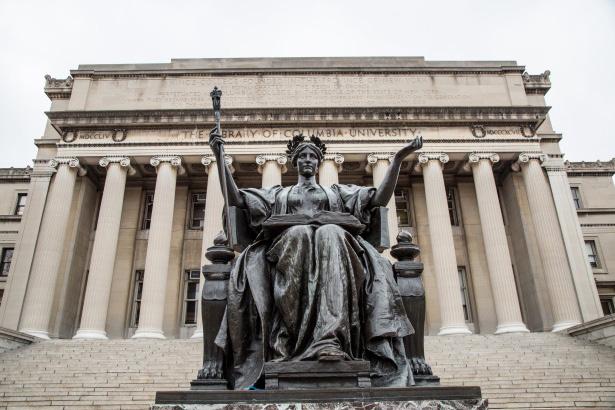
4 minute read
e History of Student Workers of Columbia Strike and the Demand for Labor Rights
The History of Student Workers of Columbia Strikes & The Demand for Labor Rights
by Dahlia Soussan
Advertisement
This year’s Student Workers of Columbia union strike takes place in the crucible of a Pandemic-fueled labor revolution.
Theorists have coined the massive worker shortage in food service, hospitality, and other low-wage industries a “Great Resignation.” The economic cushion brought by COVID-era unemployment benefits, coupled with a cultural expectation for wage growth, has disincentivized many American laborers from returning to pre-pandemic occupations marked by pay and benefits incommensurate with the demands of their jobs.
As laborers hold out for more enticing positions, employers face unprecedented pressure to offer better compensation to their workers. However, academia is a trickier beast to pin down which may explain why the second-largest strike in the nation is taking place at Columbia University this November. In recent years, universities like Columbia have come to rely on graduate student workers for their undergraduate and research operations. Students, in turn, gain coveted teaching experience and work in partnership with professors, but at a severe cost. Seldom does the $6,000 to $19,000 Columbia pays grad workers constitute a living wage, forcing many students to live in relative poverty. The conditions are only exacerbated for grad workers supporting
spouses and children on measly salaries. Further, the benefit package for workers neglects coverage for basic health services, like dental care.
When grad workers—whose livelihoods rely on hard-to-come-by opportunities from one or two professors—are exploited by their direct employers, the university will self-arbitrate investigative proceedings, intent on protecting its own reputation. This structure is prone to systemic power abuses and perpetuates graduate worker victimization at the hands of powerful university officials. According to the Union’s website, “In recent years, an instructor was sexually assaulted by a professor and the University failed to hold him accountable. Sadly, these events are not uncommon.”
While state labor boards protect student unionization at public universities, grad workers at private institutions face more obstacles. Unless the university agrees to recognize the union of its own volition, students must follow a path laid out for private companies and petition the National Labor Relations Board (NLRB), an independent entity under the federal government’s auspices, for recognition.
In recent years, the NLRB’s position on graduate students at private universities unionizing has fluctuated with the shifting political leanings of its board members. In
Disclaimer: The Bulletin does not own the images on this page.
2000, a Democratic majority board ruled that grad workers at NYU could unionize, spurring student worker unionization at schools across the country. In 2004, the board flipped its position in a ruling on a labor union at Brown. The board held the same opinion in 2016 on a similar case at Columbia, preventing student workers from unionizing. As a workaround, graduate students at Columbia voted to unionize with the United Auto Workers, a labor union representing workers in a variety of industries across North America—hence their name: Graduate Workers of Columbia-United Auto Workers. They appealed successfully to the NLRB for recognition. The New York Times reported that, when the workers returned to Columbia to bargain, Columbia refused to recognize the union or engage in negotiations. Instead, in 2018, they initiated legal proceedings against the GWC-UAW, which catalyzed the union to strike at the end of April. During the final week of the spring semester, over 1,500 research and teaching assistants flooded College Walk, demanding to bargain with the University for a fair employment contract. In 2019, Columbia relented. The union began discussions with the University, but to no avail. The University and GWC-UAW remain in a holding pattern. Administrators fail to meet the union’s basic requests so grad workers strike to increase the pressure on Columbia to engage in negotiations for tenable work conditions. Though Columbia is one of the wealthiest academic institutions in the world, it funds most of its programs through private gifts and tuition, without dipping into its endowment. Columbia’s choice to hoard wealth that could support its most vulnerable academic staff is yet another indictment of its ivory tower politics. The COVID-era labor revolution differs from historic union-based uprisings in that workers are tilting the seesaw engaging the job market on their own terms. Their trend toward independence accords with the reality that union affiliation in the private sector has declined substantially in recent decades. Nonetheless, enacting change within universities may require a more traditional approach. The GWC-UAW marries classic organizational strategy with the move toward digital activism characterizing a postCOVID social justice landscape, which may be the key to its eventual success. Whether Columbia will respond to the union with an earnest contract remains to be seen. And, in the meantime, we—as undergraduates, faculty, and university affiliates—can join the picket line.









